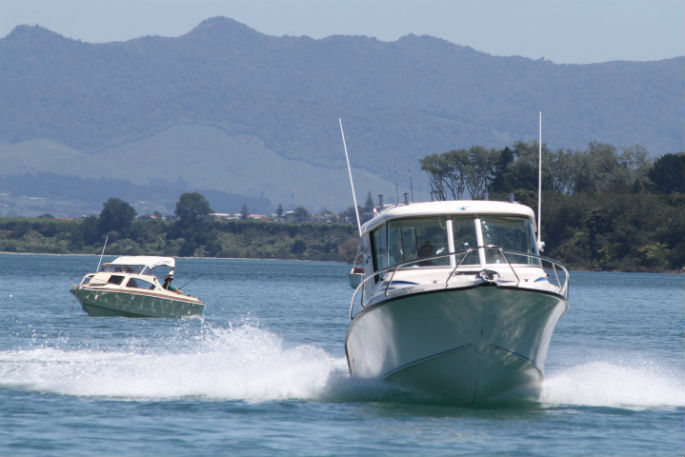Boaties are being warned to be aware of how dangerous sand bars are, and their responsibilities when traversing them.
Bars are located at the mouths of rivers and harbor entrances, and boaties often need to cross them when heading out to sea.
They are like underwater hills, and are a combination of sand, silt and mud. This means swells coming in from the sea hit the mounds, increase in height and can turn into breaking waves, also unpredictable currents can be created.
In recent years there have been several incidents around the country where boats have capsized, injuring and sadly in some instances killing those on-board.
Maritime NZ’s Principal Advisor Recreational Craft, Matt Wood says there are several steps skipper’s need to take to keep themselves and those on-board their vessels safe when crossing bars.
"Every sand bar is different."
Skipper’s planning on crossing a bar are legally responsible for managing the risks.
The most important job skippers have is to make decisions that prioritise safety for those on-board, says Matt.
"Skippers are best placed to make the decision on whether to cross a bar based on their own experience, the capability of the vessel and the actual bar conditions at the time.
"It doesn’t matter how experienced you are on the water, crossing a bar can be extremely dangerous.
"If you don’t have the knowledge, understanding or ability, it isn’t worth risking your life or those on-board to cross the bar.
"Around the country harbourmasters and Coastguard supply locally focused resources; such as bar cameras as well as education and communications’ to ensure those planning to cross bars in their areas understand the risks, and have the necessary knowledge."
Bar Safety Programme Lead at Coastguard, Simon Marshall says every bar is different, and constantly changes.
"Boaties interested in learning more about risks with bars consider attending local bar awareness seminars, or check out the videos available on how to manage risks when crossing bars.
"Anyone planning on crossing a bar needs to check the weather forecast, tide and bar camera (if available); tie down loose objects on the vessel, ensure everyone is wearing a properly fitted lifejacket, check out any material about the specific information relating to the bar they are planning on crossing, such as the weather patterns and tidal considerations; as well as log your crossing with Coastguard on VHF radio or cellphone before departing," he says.
In the Bay of Plenty for example, there are live bar cameras for the Bowentown Bar, Whakatane River and at the Kaituna River.
"These are crucial tools to understand the conditions, and make a considered decision as to whether or not it is safe for you to cross the bar," Matt Wood says.
With autumn now here, and winter on the way, a capsizing while crossing a bar can dump those on-board into cold and potentially rough waters.
"While rescuers are ready to respond, cold and rough conditions can be difficult to survive in, and every year Coastguard volunteers respond to emergencies on bars.
"Too often Coastguard volunteers see the tragic effects drownings have on whānau and the community," Simon Marshall says
The message from Maritime NZ, harbourmasters and Coastguard is clear- if in doubt, don’t go out.
Resources to assist in bar crossing knowledge
https://www.boprc.govt.nz/living-in-the-bay/boating-in-the-bay/being-safe/bar-crossing/
https://www.maritimenz.govt.nz/recreational/safety/crossing-the-bar/#before
https://www.boatiesbestmate.nz/



0 comments
Leave a Comment
You must be logged in to make a comment.